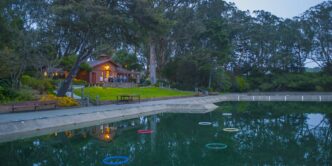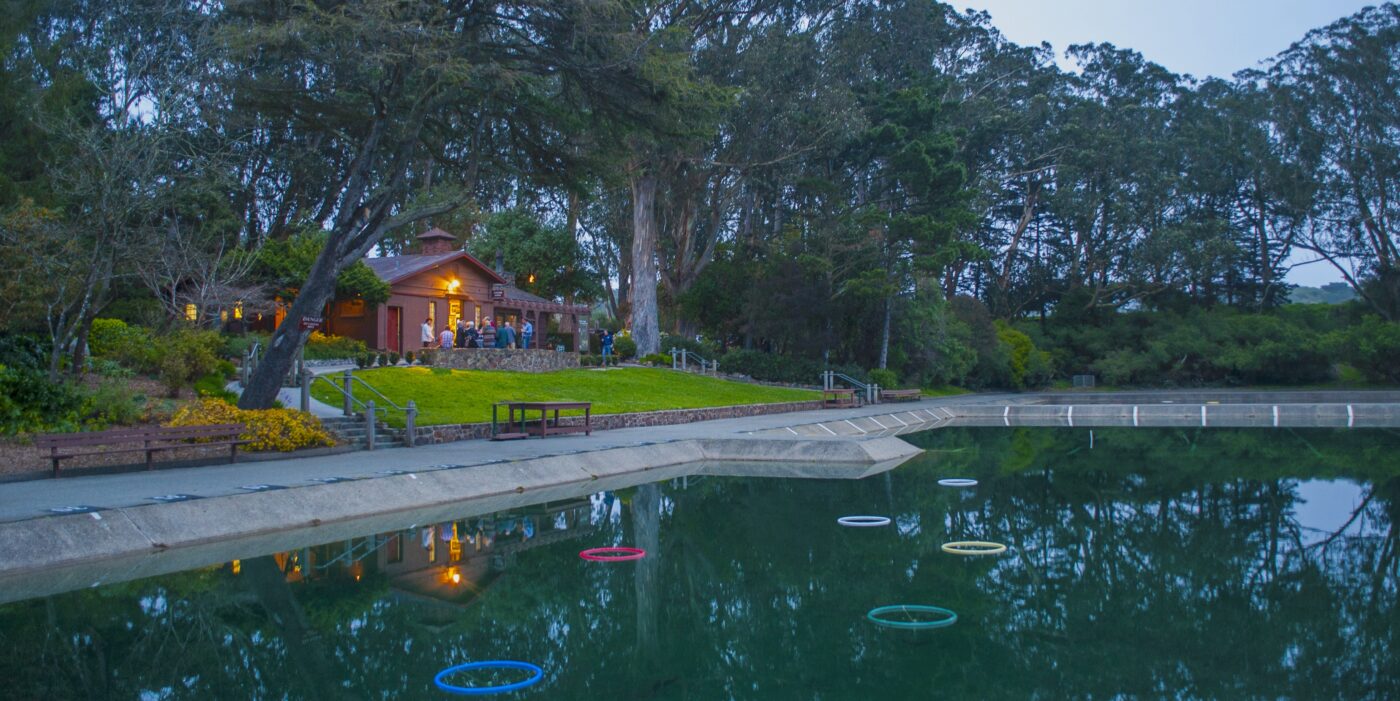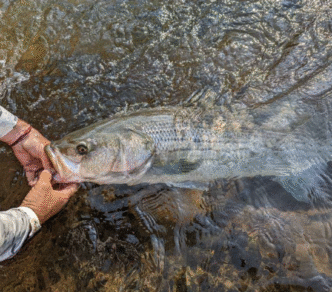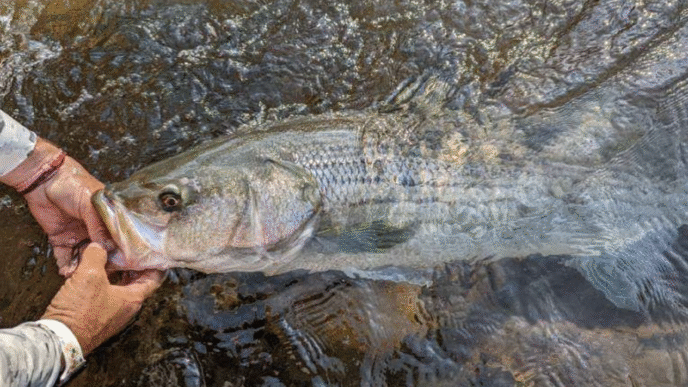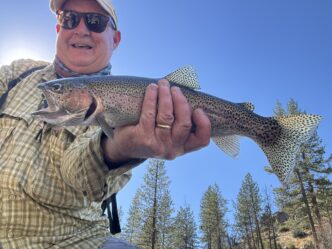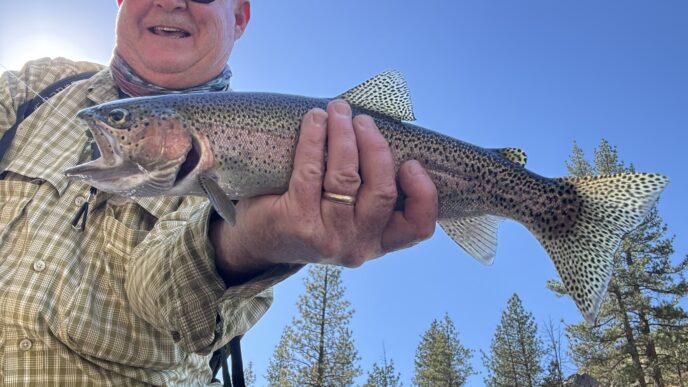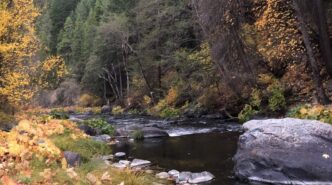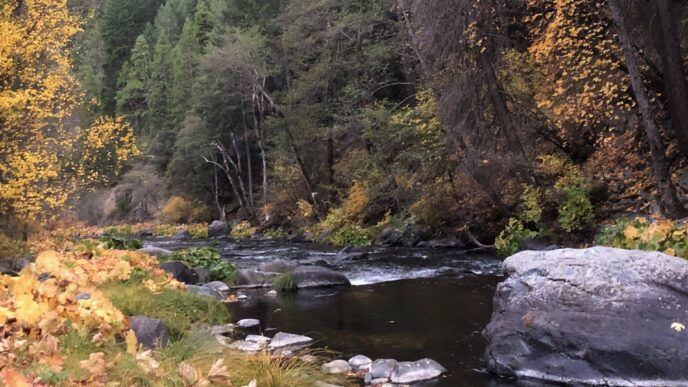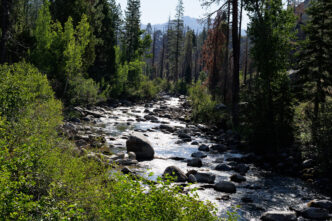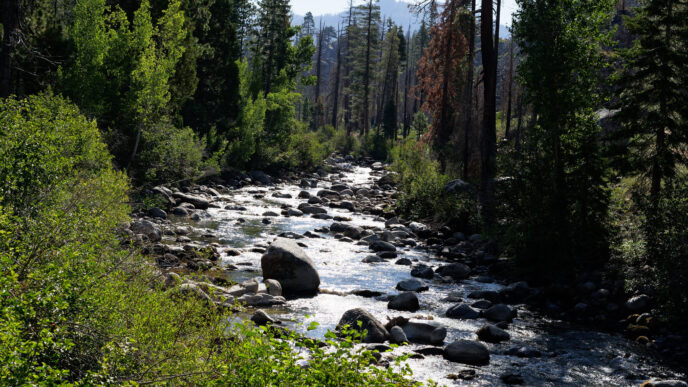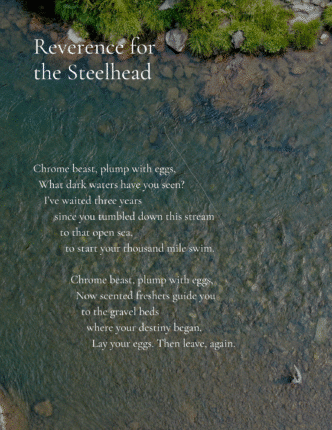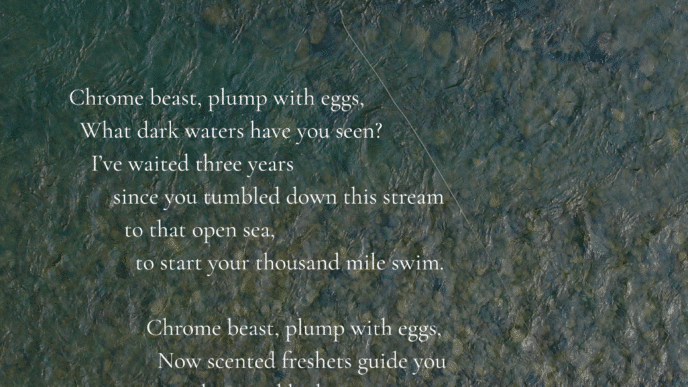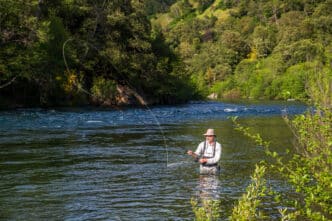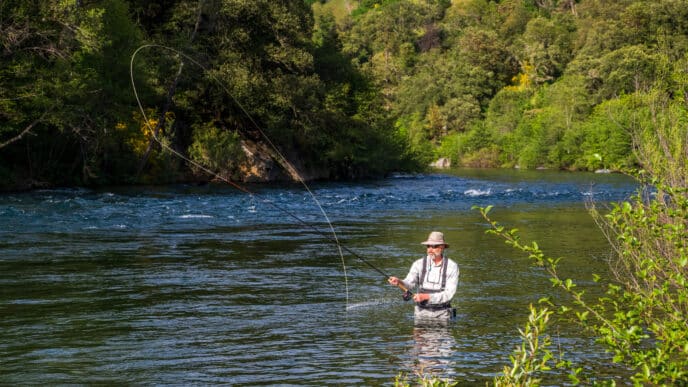Where the Past, Present, and Future Come Together
When you visit the Golden Gate Angling and Casting Club (GGACC) for the first time, you feel the past, present, and future in constant conversation with one another. Buffalo roam in their paddock across the street from the entrance; horses amble through nearby stables, just visible through the trees that help keep the casting ponds a well-kept secret; coyotes howl from the surrounding woods as darkness falls each day.
Entering the parking lot—taking care not to run over someone zipping past on an electronic skateboard or collide with the driverless cars that swarm Golden Gate Park—all your modern-world worries begin to recede. Your pulse slows. That is, until you round the clubhouse and behold the three magnificent casting pools, where fly lines in different colors unfurl as the whoosh of a long spey rod marks the end of a cast.
Thomas McGuane described this place in The Longest Silence:
“The [GGACC] clubhouse and casting pools are on an elevation that is shaped like a small mesa. It is a single story, dark and plain, and faces pools surrounded and overhung by immense fragrant eucalyptus trees. The clubhouse is thoroughly grown in with laurel and rhododendron, and—after street-level Golden Gate—the effect is distinctly otherworldly.”
The Anglers Lodge is the log cabin every fly fisher dreams of, complete with an assortment of salty anglers on the porch arguing about the merits of some rod, reel, river, or any of the other things passionate anglers love to debate and embellish.
Inside the lodge, you sense the past in the knotty pine walls, the rough-hewn thresholds, and the craftsman doors hung on wrought iron doorknobs with strap hinges that still bear the mark of a blacksmith’s hammer. Every detail honors the spirit of craftsmanship and the club’s commitment to learning and excellence.
The walls themselves tell the history of fly fishing through photographs, legendary rods mounted on hooks, and framed flies not just tied but invented by GGACC members. As with any sacred site to which people make pilgrimage, visitors find here artifacts that honor the tradition of innovation and achievement that are part of the club’s legacy—and essential to the story of the sport itself.
One such relic is the original Horner Deer Hair, a fly Lefty Kreh claimed was one of the few he’d carry anywhere, broadly known as the Humpy. If the day is nice, you might even borrow Lefty’s book The Professionals’ Favorite Flies from the club library and head outside to read more about Jack Horner’s distinctive patterns at a table near the west end pool, known as Horner’s Corner.
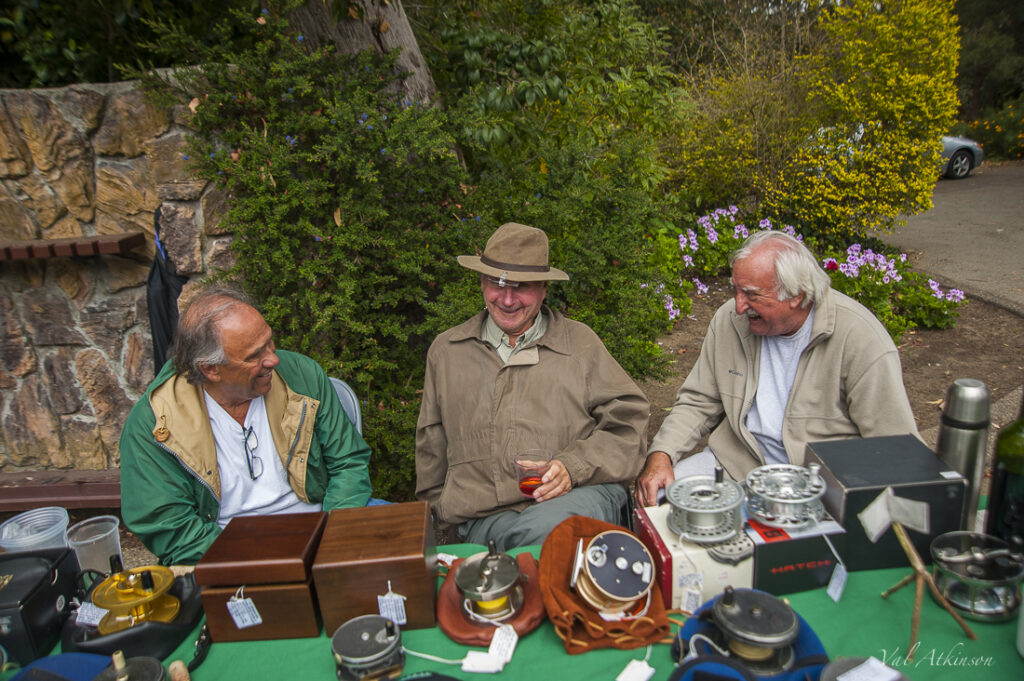
Wherever you turn, you see yourself reflected in the once-bright plaques honoring greats like Steve Rajeff, 45-time American Casting Association Grand All-Around Champion and 14-time World Casting Champion. Tacked up by the coffee pot in the rod locker room are articles about Maxine McCormick, who, at just 12, became the youngest gold medalist in the adult division at the World Casting Championships. Her coach, Chris Korich—a 12-time world champion himself—continues to shape the sport and its rising stars at the Golden Gate Angling and Casting Club, where past and present are joined like a perfectly tied blood knot.
Since its establishment in 1933, the GGACC has been a hub of innovation for the sport. On its ponds, members helped shape key features of the Pflueger Medalist reel and advanced bamboo rod design for R. L. Winston and the E. C. Powell Rod Company. Jimmy Green—namesake of the club’s Spey-O-Rama—pioneered graphite and boron rods. GGACC members also led breakthroughs in fly lines, including the development of shooting heads and new materials like nylon, Dacron, and bonded plastic. The rod and line weight systems still used today were born here at the club.
While the GGACC holds a special place in the angling community, it is not the only casting club in Northern California. In addition to more than 60 fly-fishing clubs across the region, there are two other casting clubs that host their own competitions, classes, and events: the Oakland Casting Club (established in 1941) and the Flycasters of San Jose (founded in 1965).
OCC board member—and its most accomplished and longstanding caster—Chris Korich shared:
“Since it was founded, members of the Oakland Casting Club have won hundreds of national and world casting titles and set many records in the process. Equally impressive, our members have made significant contributions to casting technique, instruction, tackle design, and fly line standardization, which have helped millions of anglers around the globe. Fortunately, the club’s cumulative angling, casting, and equipment expertise continues to be shared freely at our wonderful casting pools.”
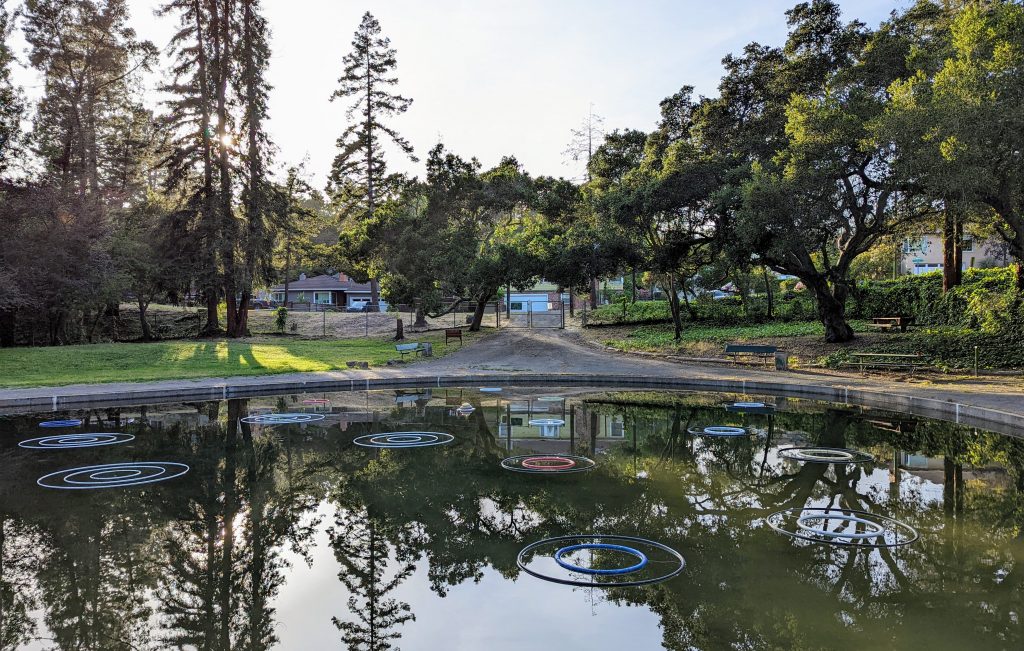
Echoing many of the themes common to both OCC and GGACC, Frank Eldredge, vice president of the Flycasters of San Jose, celebrates the spirit of generosity and growth that defines his club:
“One of the common themes is the array of skills and experience among our club members—and their willingness to share their expertise. I came to the club as a very experienced fly fisherman, having graduated from bait and lure fishing at the tender age of 14. I didn’t necessarily expect to add much to my skill set by joining the club, but I quickly discovered areas where I could grow as a fly fisherman by taking advantage of classes and seminars.”
While these three casting clubs each offer their own “home waters,” the angling opportunities available throughout Northern California extend their reach far beyond city limits. Through regular fishouts—or “Rondies,” as the clubs call them—members can experience everything from spey casting on the American River to float-tubing for bass, ladder fishing for Lahontan cutthroat trout on Pyramid Lake, or surfcasting for stripers off the beaches of San Francisco.
These casting clubs, in other words, are not only about becoming master casters—they’re about putting those skills to the test on the wild, varied waters of California and beyond.
At the Golden Gate Angling and Casting Club, that blend of technical excellence and real-world adventure is grounded in something even deeper: a sense of community. While the awards and articles throughout the Anglers Lodge showcase the GGACC’s storied past, it’s the people—and the programs they build—that make the club what it is today. The true legacy of the GGACC lives in the friendships, mentorship, and shared joy found around the ponds.
Programs like the Women’s Program and Project Healing Waters exemplify how the club creates inclusive, supportive spaces for anglers of all backgrounds and abilities. Whether it’s a casting clinic led by certified instructors, veterans learning to tie flies, or newcomers preparing for their first fishout, what binds it all together is the spirit of generosity and connection.
Even outside formal programs, the community thrives. On any afternoon you might see spey casters tracing elegant lines across the water, trading tips, stories, or a good laugh—maybe even a pour of bourbon. And on other evenings, the club hosts speakers on everything from conservation to the poetry of fly fishing. One such evening, author Mark Kurlansky spoke about his book The Unreasonable Virtue of Fly Fishing, posing a series of questions that linger in the minds of many anglers:
“Should you take the fish? Should you fish on a sunny or overcast day? In the river or from the bank? With colorful flies or not? What do these fish like to eat? At what time of day?”
He concluded, “These types of questions are endless, but underlying them all is a more fundamental question, the question of all questions: Why do it?” Spend a little time here, and the answer becomes clear.
The Learn to Fly Fish (LTFF) program reflects the GGACC’s commitment to education and camaraderie. Many who enter the program unsure of their abilities leave not only as competent anglers, but as mentors eager to give back. That cycle of learning and sharing defines the club.
High school English teacher Mike Olausen joined LTFF as a beginner. “The three-year program started with the basics, then moved to trout and moving water, and eventually to bass topwater techniques, tightline tactics, and stillwater indicators,” he said. “I went from thrashing a line hopelessly at snickering fish to a relatively competent angler. Now I can truly appreciate my time on the water. I only hope to pay it back by becoming a mentor, as so many others have.”
LTFF directors Alan Dye and Thomas Knoble have expanded the program to include monthly Casting Labs and fly-tying sessions—informal, welcoming gatherings now known affectionately as “Casting and Carbs,” thanks to the steady flow of banana bread and cookies participants bring for the sharing. As Alan puts it, “There’s nothing like the smile on a student’s face—whether they’re eight or 80—when something finally clicks.”
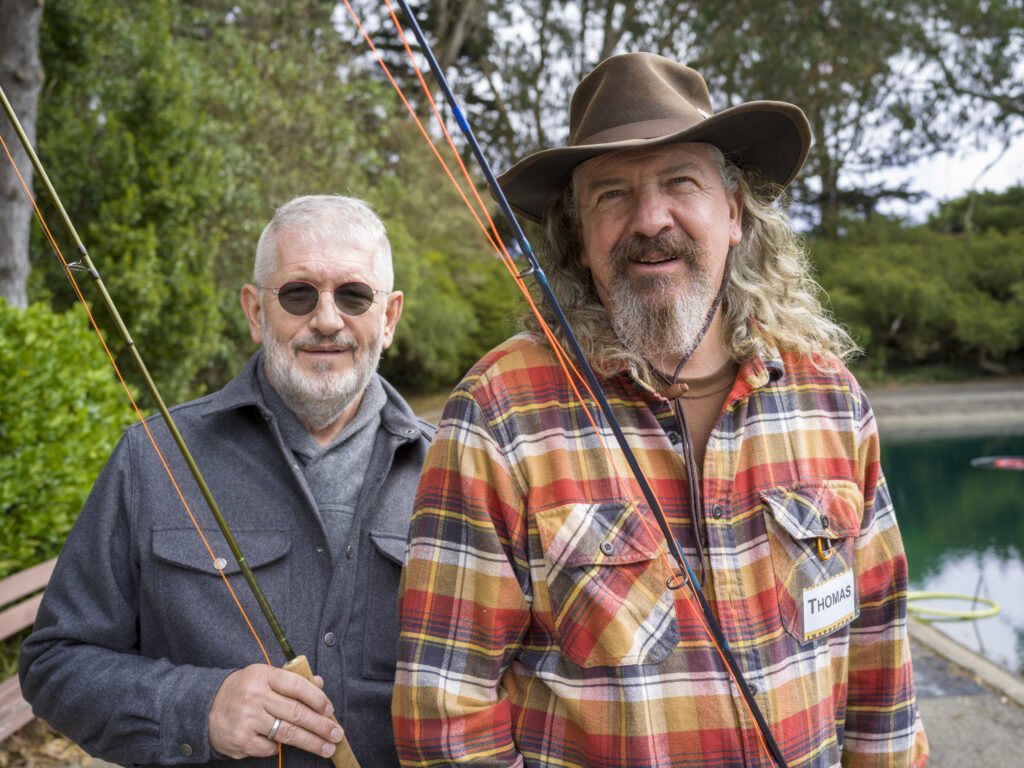
That sense of joy and connection resonates with many, including the author of this piece. Through LTFF and other GGACC programs, I found a passion I didn’t know I needed and friendships that now feel foundational. The club doesn’t just teach you how to fish—it gives you people to fish with.
Victoria Scigliano, a nurse practitioner in San Francisco, echoes that sentiment. “Honestly, what makes fishing so amazing is the time I get to spend with my dad at the ponds or on a river thanks to the LTFF. I still can’t name one fly or fish, but I’ve had endless fun times with my dad. GGACC provides a wonderful bonding experience for our family. Now that my little brother has joined LTFF, it’s given us a whole new way to gather, laugh, and make new friends.”
Drop by any day and you’ll see the past and future of fly fishing side by side. You might catch a glimpse of Willy George guiding future instructors through a tough cast, shouting “Hot dog!” when someone nails it. Or you’ll see LTFF grads stepping up to become certified instructors themselves, ready to pay forward the wisdom they’ve received.
Whether it’s a father and daughter casting side-by-side, or a lone angler refining her spey cast under a darkening sky, what endures at the GGACC is a devotion not just to the craft, but to one another. The commitment to casting, competition, and community runs like a tight line from the past into the future. rout waters, the simple act of stepping into waders, casting a few lines, and sharing stories and some laughs with fellow anglers is priceless, unique treasure.
Club Information
GOLDEN GATE ANGLING & CASTING CLUB
Founded in 1933 (first founded as San Francisco Fly Casting Club in 1894)
Golden Gate Park
1232 John F Kennedy Dr
San Francisco, CA 94121
- Members: 1,300+
- Ponds are free and open to the public dawn to dusk
- Individual membership $40 a year. Family and youth membership available.
OAKLAND CASTING CLUB
Founded in 1941
McCrea Memorial Park
Elinora Ave at Carson St
Oakland, CA 94619
- Members: 150 members
- Pools are free and open to the public dawn to dusk
- Individual membership $30 a year. Family and youth membership available.
FLYCASTERS OF SAN JOSE
Founded in 1965
Los Gatos Creek Park
1250 Dell Ave
North end of park
Campbell, CA 95008
- Members: 295 members
- Casting ponds are free and open
to the public dawn to dusk - Park entry fee required
- Stocked pond in the park
- Individual membership $50 a year.
Family and youth membership available


